The historically Moscow-aligned Ukrainian Orthodox Church is still affiliated with the Russian Orthodox Church despite claims to the contrary, a Ukrainian state committee has found.
In a lengthy investigation, the Ukrainian State Service of Ukraine on Ethnic Policy and Freedom of Conscience (DESS) has concluded that the Ukrainian Orthodox Church (UOC MP) is still legally part of the Russian Orthodox Church.
The timing of the document, which confirms an earlier expert committee probe, is particularly crucial. It comes just one week after Ukraine stripped citizenship from the UOC MP leader.
Ukraine is gearing up for a lengthy legal battle with the UOC MP after banning Russian-affiliated churches in August 2024.
The law gave religious organizations nine months to sever relations with Russia. Now, DESS is probing whether the connections are still there.
But, how does one establish such matters? After all, the UOC MP insists it supports Ukraine and that it already cut its Russian ties back in 2022.
Moreover, it is leading a global campaign decrying alleged state religious persecution. This initiative has been particularly fruitful among American Republicans, in part thanks to lavish lobbying efforts.
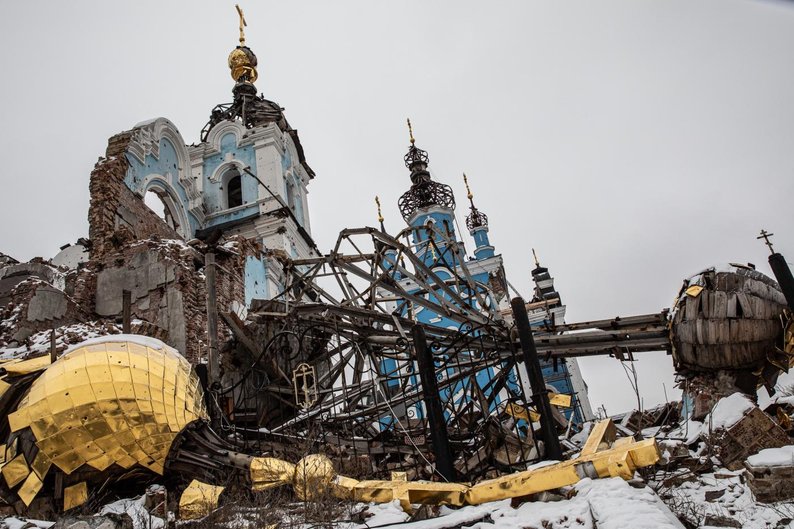
Canonically speaking
The path of an Orthodox church to autocephaly (independence) is notoriously vague and complicated. Unlike the Catholic Church, governed by a single primate from Rome, global Orthodoxy is defined as a constellation of amicable jurisdictions that received independence according to pastoral needs.
Ideally, of course. In practice, however, the path to church independence has been fraught with political strife, stonewalling, and competition between two centers of Orthodox gravitas—the Moscow and Ecumenical patriarchates.
Enter the Ukrainian Orthodox Church.
The UOC MP’s predicament stems from centuries of imperial church politics. The 1686 transfer of the Kyiv Metropolitanate from Constantinople to Moscow began Russian control over Ukrainian Orthodoxy—control that outlasted the Soviet Union and continued into independent Ukraine.
This pattern wasn’t unique to Ukraine. The Russian Orthodox Church historically granted limited “autonomy” to Orthodox communities in its sphere—a status somewhere between full independence and direct diocesan control. The Japanese Orthodox Church, Latvian Orthodox Church, Estonian Orthodox Church, and Ukrainian Orthodox Church all received similar arrangements.
True autocephaly, by contrast, means complete independence—as Moscow granted to the Polish Orthodox Church in 1948 and the Orthodox Church in America in 1970. The language was unambiguous: full canonical independence with no mention of accessing global Orthodoxy “through” another church.
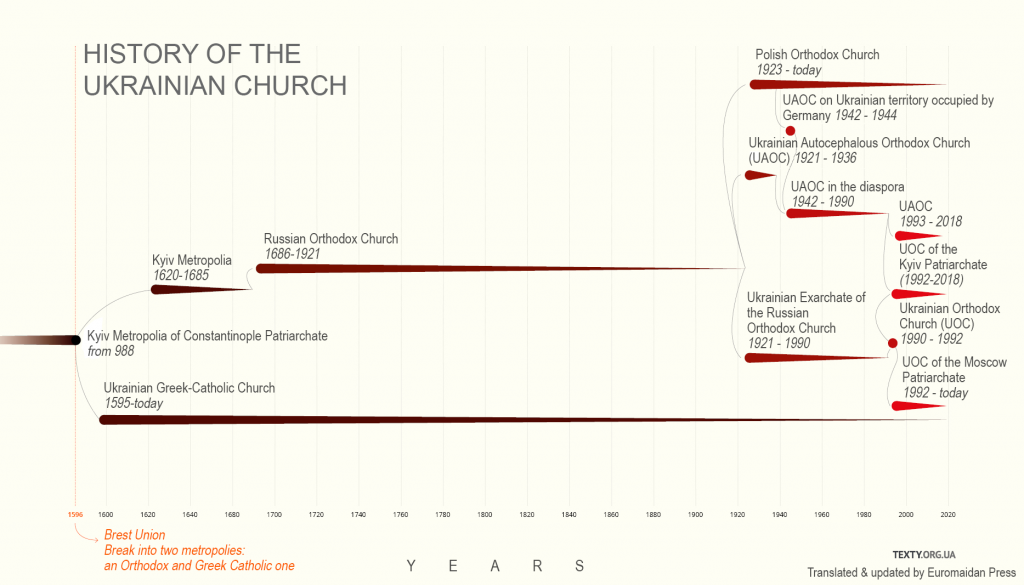
What the documents say
So what about Ukraine’s status today?
The DESS investigation shows that Ukraine’s “autonomy”—that ambiguous middle ground between independence and subordination—remains unchanged.
The 21-page report reads like a forensic autopsy. It dissects the UOC MP’s claims using two key criteria:
- What the church’s foundational documents say
- and what its actions reveal.
The smoking gun lies in a 1990 document: the Gramota (Charter) issued by then-Patriarch Alexy II of Moscow. The UOC MP still cites this in its governing statutes. It grants the Ukrainian church “independence and autonomy in its governance”—but with a crucial caveat.
“The Ukrainian Orthodox Church is connected through our Russian Orthodox Church to the One Holy, Catholic and Apostolic Church,” the Gramota declares.
Emphasis ours
For DESS investigators, this single line proves subordination. Ukraine’s second-largest Orthodox denomination remains canonically tied to Moscow.
But wait—doesn’t the UOC MP claim it severed these ties after Russia’s 2022 invasion? The church leadership has repeatedly insisted they’re no longer part of the Russian Orthodox Church structure.
The investigation reveals a different story. A 2017 addition to the Russian Orthodox Church’s statutes—Chapter X, titled “The Ukrainian Orthodox Church”—still mandates that the Ukrainian church must:
- Commemorate the Moscow Patriarch’s name in all Ukrainian churches
- Have its statute approved and confirmed by the Moscow Patriarch
- Have its primate blessed by the Moscow Patriarch
- Submit decisions about creating or dissolving dioceses to Moscow’s Archiereus Council for approval
- Ensure Ukrainian bishops participate in Russian church councils as obligated members
- Accept Moscow’s Holy Synod decisions as binding
- Receive holy chrism (consecrated oil) from the Moscow Patriarch
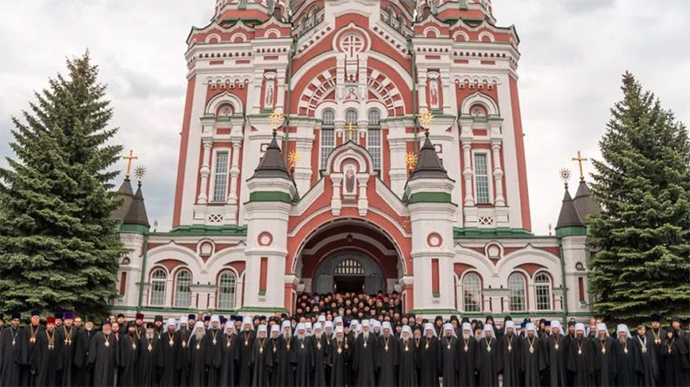
What about the 27 May 2022 Local Council at Feofania Monastery? The UOC MP points to this gathering as proof of their independence. The council did adopt changes to the church statute, removing some explicit references to Moscow.
But the DESS investigation calls this a “notable step toward independence” that “did not mean the withdrawal” from the Russian Orthodox Church. Why not?
The 2022 statute preserved the constitutive provision that the Ukrainian Orthodox Church operates “according to the Charter of the Patriarch of Moscow and All Rus Alexy II of 27 October 1990.”
The Gramota remains the constitutional foundation.
Has the UOC MP issued any foundational documents superseding the Gramota? The answer is no.
The investigation found no documents from the UOC MP’s governing bodies—its Sobor, Bishop’s Council, or Holy Synod—declaring withdrawal from the Russian Orthodox Church structure. The silence is deafening.
UOC MP actions speak louder
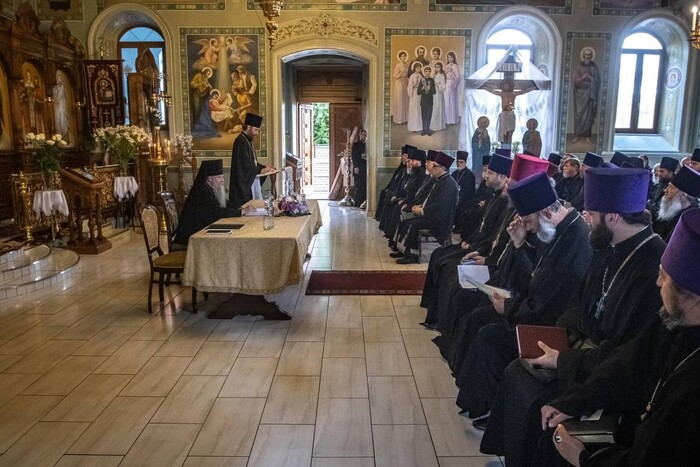
But documents only tell half the story. What have the churches actually done?
Russian church authorities have been unilaterally transferring UOC MP dioceses on Russian-occupied lands to direct Moscow control since 2022. Three Crimean dioceses in June 2022. The Rovenky diocese in October 2022. The Berdiansk diocese in May 2023.
Did the UOC MP resist these transfers? Not once.
Some UOC MP bishops have publicly supported Russian aggression. Metropolitan Panteleimon of Luhansk and Alchevsk participated in pro-war events and attended celebrations for Patriarch Kirill’s anniversary.
True, some clergy operate under Russian occupation, where resistance could mean imprisonment. But the church’s response reveals its priorities.
The UOC MP aggressively condemns priests who defect to the rival Orthodox Church of Ukraine, granted independence by Constantinople in 2018. It bans them from serving.
When Moscow transfers entire dioceses? Silence.
In October 2024, 33 UOC MP bishops condemned Moscow’s unilateral diocese transfers. Were they supported by their colleagues? No. The church’s governing bodies said nothing.
This shows they can resist when they choose to. They just don’t choose to resist Moscow.
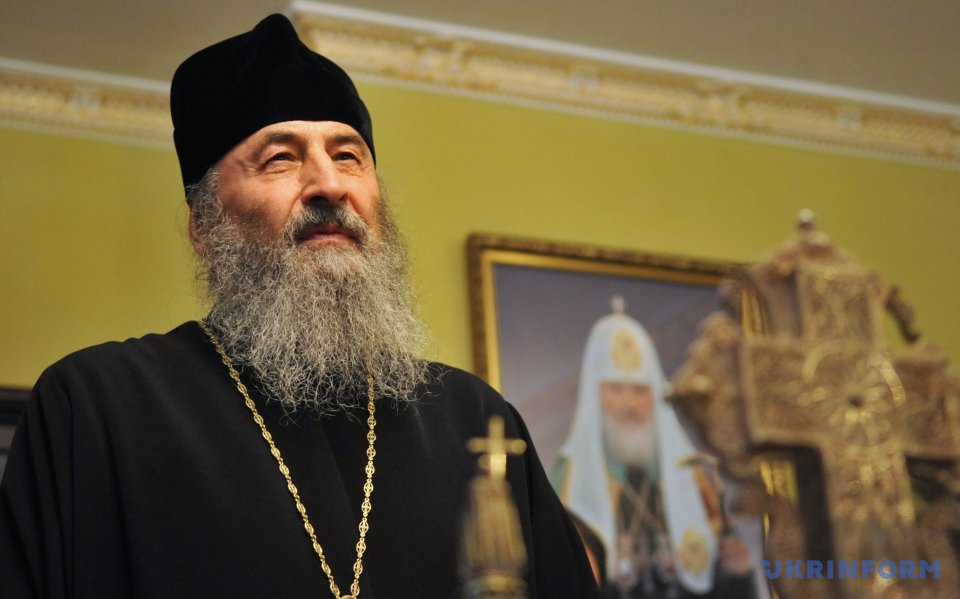
Ukraine just stripped citizenship from the leader of Putin’s favorite church—his 8,000 parishes are next
The grassroots revolt
Between 2022 and 2024, multiple groups of clergy and laypeople issued appeals to Metropolitan Onuphrius. They demanded complete canonical separation from Moscow.
Were these appeals considered? The investigation notes they were “left without consideration by the highest organs of church authority and governance of the UOC MP.”
The verdict
The DESS conclusion is unequivocal: the Kyiv Metropolitanate remains affiliated with the Russian Orthodox Church under all four criteria established by Ukrainian law:
- the UOC still belongs to Moscow’s structure
- its documents still reference Russian control
- Moscow still makes binding decisions for Ukrainian dioceses
- Ukrainian bishops still sit on Russian church councils.
For Ukrainian authorities, this provides legal justification for potential further action. For the church itself, it represents a canonical Catch-22. It must maintain the Russian connection that legitimizes its existence while operating in a country that has banned that very connection.
Is the commission biased?
While the UOC MP hasn’t responded officially to the DESS conclusion, prominent figures like Iona Cherepanov have decried it as “Soviet,” implying that the commission is biased and implements state decisions to, allegedly, persecute the UOC MP.
That’s impossible, says religious scholar and philosopher Yuriy Chornomorets, who had previously taken part in an expert committee that arrived at similar conclusions. The DESS conclusion uses only facts; therefore, its findings are impossible to counter, Chornomorets told Euromaidan Press.
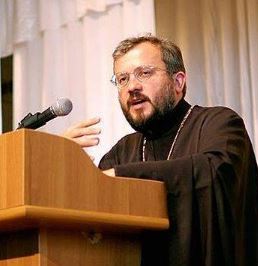
The sophistication and detail of analysis testify to the high level of expertise of the DESS experts, he maintains. Moreover, the conclusions in the documents are supported by quotes from UOC MP leaders themselves.
Theologian Cyril Hovorun told Euromaidan Press that the conclusions “correspond to canonical realities as they are understood in Eastern Christianity.”
The UOC still references Moscow’s 1990 charter. It still operates under Russian Orthodox Church statutes. Ukrainian bishops still sit on Russian church councils.
These aren’t interpretations—they’re documented facts.
Why doesn’t the UOC MP break free from Russia?
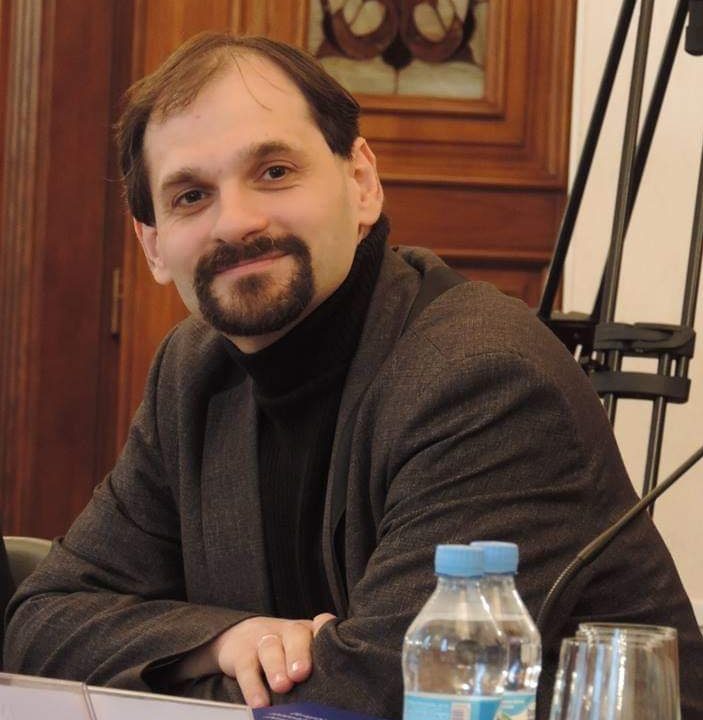
The path forward is surprisingly straightforward, according to Chornomorets. The UOC would need to officially decide to leave the Russian Orthodox Church. It must notify all Orthodox patriarchs of its new status. It should condemn Moscow’s seizure of Ukrainian dioceses.
“The UOC must start acting like an autocephalous church,” he argues.
So why haven’t they?
This question haunts Ukrainian religious observers. The UOC’s response reveals a stunning contradiction.
“Today the UOC admits it remains part of the Russian Orthodox Church but claims it intends to become autocephalous,” Chornomorets notes. “Yet it demands Ukrainian authorities treat it as if it already achieved independence.”
The duplicity runs deeper. “When UOC bishops operate outside Ukraine—in Europe, for instance—they demand local Orthodox hierarchs treat them as Russian Orthodox Church representatives,” he explains. They want to be independent in Ukraine but Russian abroad.

Religious historian Andriy Smyrnov believes Metropolitan Onuphrius is waiting for the war to end. Why? “To return to the Russian Orthodox Church.”
Chornomorets offers a blunt explanation. “UOC leadership maintains passivity because they’re not afraid of Ukraine’s democratic state—they’re panicked by Putin.” He suggests UOC leaders fear they could end up dead like Russian officials who displease the Kremlin.
Financial incentives provide another explanation. Influential Russian-born oligarch Vadym Novinskyi—who obtained Ukrainian citizenship in 2012 under Viktor Yanukovych, serves as a UOC deacon, and is widely considered the church’s main financial patron—allegedly channels VTB Bank loans to pro-Russian bishops.
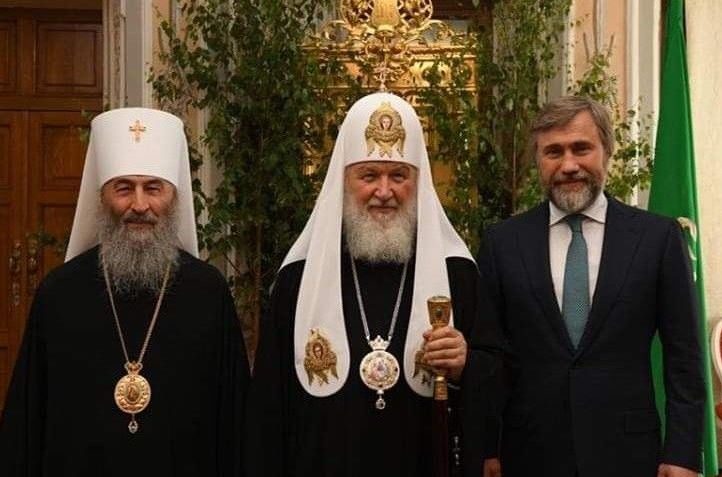
Novinskyi’s funding could be part of the explanation, Hovorun believes. But not all of it.
Meanwhile, Smyrnov believes the UOC MP hasn’t declared autocephaly “because it would place them in a schism.” Breaking away unilaterally would leave the church without recognition from other Orthodox patriarchates.
“But really, over three years they could have appealed to church primates, could have restored communication with the Ecumenical Patriarch [severed in 2018 – ed] and asked for help,” he says.
The irony is palpable. While Chornomorets notes that 74% of UOC faithful support immediate separation from Moscow, their bishops cling to Russian ties that Ukrainian law now explicitly forbids.
What happens next?
“The new law preserves Russians’ right to worship freely, hold gatherings, and maintain their own temples,” Chornomorets explains. “But it strips them of privileges to use approximately 3,000 religious buildings belonging to the state as historical monuments or local communities.”
He notes the law’s limitations.
“The sanctions are too mild—loss of legal entity status for religious communities, monasteries, seminaries, dioceses, and the Kyiv Metropolitanate, but nothing that would constitute a real ‘ban on the Russian Orthodox Church.'”
DESS will now compile a list of religious organizations connected with the banned Russian Orthodox Church structure. “If a parish ends up on the list and doesn’t comply with the directive to eliminate affiliation, and uses state property, then the lease agreement will be terminated,” Smyrnov says.
But there won’t be mass prosecutions. The focus remains on the Kyiv Metropolitanate itself.
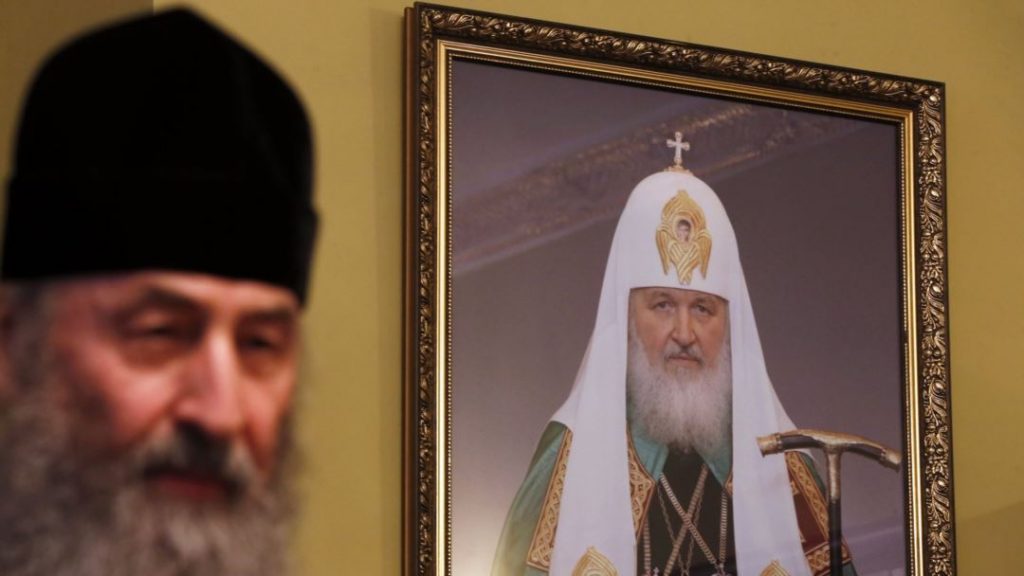
Smirnov expects Metropolitan Onuphrius might convene a bishops’ council to declare the UOC independent in response to the DESS directive.
But the 75-year-old Metropolitan, who came of age in Moscow’s Holy Trinity-St.Sergius Lavra, represents a generation of church leaders whose worldview remains fundamentally tied to the Russian Orthodox tradition, regardless of political circumstances.
Why does it matter if the UOC MP is still affiliated with Russia?
Since Russia’s 2022 full-scale invasion, Ukraine has attempted to prod the UOC MP with its 8,097 parishes, vs the roughly 9,000 of rival independent OCU, into ditching Moscow, thus reducing the amount of Russian soft power in the embattled country.
The UOC MP has been viewed as Russia’s soft power tool for decades, promoting a version of the “Russian world” ideology that envisions Ukraine as part of a “Holy Rus” rather than an independent state.
As Andriy Smyrnov notes, the church spread Russian narratives that Ukraine should exist as Russia’s province, not a sovereign nation.
The stakes extend beyond theology.
Russia will inevitably influence Ukraine’s political and religious situation if the Moscow Patriarchate remains, which is why not only Ukraine but Baltic states seek solutions to evict Russian church influence.
Ukraine’s second-largest Orthodox denomination faces a choice: genuine independence or continued subordination to a church that blesses the bombs falling on Ukrainian cities.
Read also
- Another Ukrainian Orthodox Church actually got its independence
Tomos ante portas: a short guide to Ukrainian church independence
- Committee findings in 2023
Moscow-backed Ukrainian Orthodox Church still linked to Russia despite claims – expert committee
-
Anatomy of treason: how the Ukrainian Orthodox Church sold its soul to the “Russian world”



